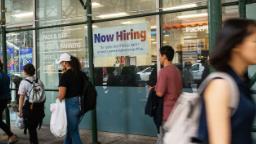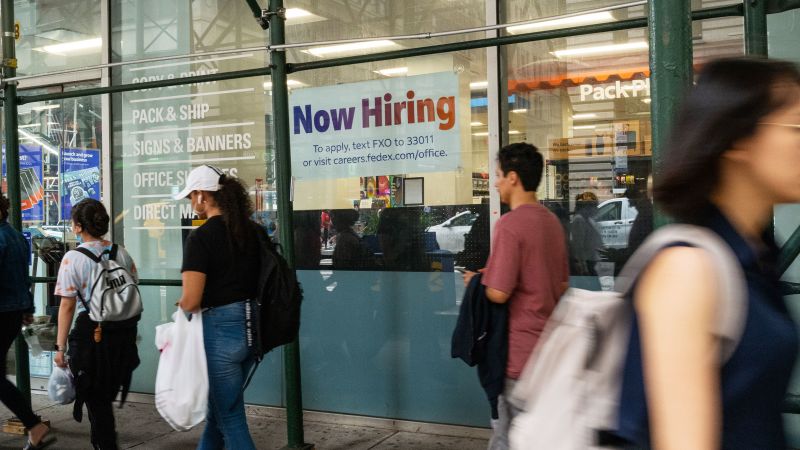
New York
CNN
—
Last year was dominated by scary headlines about crushing inflation, super-sized interest rate hikes and mounting recession fears.
It was a brutal period for the stock market, with roughly one-fifth of the value of the S&P 500 vanishing and the Nasdaq dropping by more than one-third. All three major US markets suffered their worst years — by far — since 2008.
And yet now that 2022 is over, there are clear bright spots in this economy that offer hope 2023 will not be the year the next recession begins.
Hiring remains surprisingly resilient. The economy added a robust 263,000 jobs in November, and the unemployment rate is just 3.7% — down dramatically from nearly 15% in the spring of 2020.
This is just a touch above the half-century low that was tied earlier this year.
Although major tech and media companies including Amazon, Twitter and Meta have laid off thousands of workers, initial jobless claims remain low.
New numbers published last week show first-time applications for unemployment benefits edged up to 225,000. That’s still low historically and almost exactly where jobless claims were a year ago, long before recession fears emerged.
“This is one reason to the be optimistic the economy could skirt a recession,” Moody’s Analytics chief economist Mark Zandi told CNN on Thursday. “Without mass layoffs, it’s unlikely consumers will stop spending and the economy suffer a downturn.”
The cost of living is still way too high, but the rate of inflation appears to have peaked.
Consumer prices soared by 7.1% year-over-year in November. At almost any other point in the past 40 years, that would be alarmingly high. But this marked the fifth-straight month of improvement and a significant cooldown from 9.1% in June. It’s also the lowest annual inflation rate in nearly a year.
If this trend continues, it could significantly lower the risk of a recession. But if inflation remains well above the Federal Reserve’s 2% target, that would be problematic.
The No. 1 headache for consumers for much of this year has eased considerably.
After spiking above $5 a gallon for the first time ever in June, gas prices have plunged. The national average for regular gasoline recently dropped to $3.10 a gallon, an 18-month low, though it has crept higher in recent days to about $3.22 a gallon.
Gas prices are expected to climb again this spring and summer but, for now at least, experts are not forecasting a return to $5 a gallon.
For much of the past year, wages have been hot but inflation has been hotter.
That means adjusted for inflation, paychecks have been shrinking.
But that trend has begun to reverse, at least when measured on a monthly basis. Real wages have been growing faster than consumer prices, a significant shift that could give consumers firepower to keep spending next year.
The Fed’s war on inflation is the reason the risk of a recession is significant. The central bank is effectively slamming the brakes on the economy.
The spike in borrowing costs has already set off a deep slump in the housing market, the most interest rate-sensitive part of the economy.
The fear is that the Fed will eventually overdo it, raising rates so high and keeping them there for so long that it causes a recession — if the Fed hasn’t already done that.
But Fed officials have signaled they could be ready to pause their inflation-fighting campaign late in the winter or early in the spring.
Federal Reserve Chairman Jerome Powell has made it clear the Fed isn’t anywhere near ready to hit the gas on the economy by cutting rates. But just removing its foot from the brake would be a positive.
Note:- (Not all news on the site expresses the point of view of the site, but we transmit this news automatically and translate it through programmatic technology on the site and not from a human editor. The content is auto-generated from a syndicated feed.))



